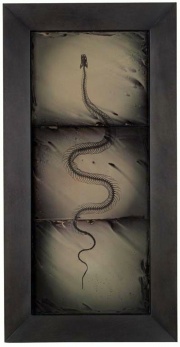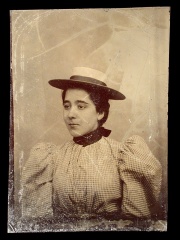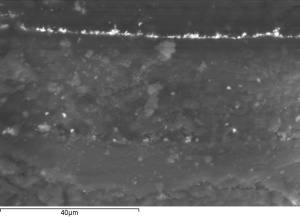Difference between revisions of "Tintype"
Jump to navigation
Jump to search
| Line 1: | Line 1: | ||
| − | [[File:2002.337-SC43754.jpg|thumb|<br>MFA# 2002.337]] | + | [[File:2002.337-SC43754.jpg|thumb|Tintype<br>MFA# 2002.337]] |
== Description == | == Description == | ||
Revision as of 16:36, 8 June 2022
Description
An inexpensive positive photograph made using a collodion emulsion on a black enameled Tinplate. The process for making tintype, or ferrotype, photographs was patented in 1856 and used up to the 1940s. Tintype plates contained a thin layer of photoreactive Collodion coated on a black lacquered iron sheet. They produced a direct positive image that was processed quickly and inexpensive. The images often had poor contrast levels ranging from a dull grays to creamy whites. Tintypes were typically pasted in paper cards with decorative embossed borders. They were called ferrotypes outside the USA.
Synonyms and Related Terms
ferrotype; ferrotyping; melainotype; tin type (sp)
Risks
- Moisture may rust iron plate
- Contact with smooth surfaces, such as glass or polyester, may cause shiny spots
Additional Images
Resources and Citations
- Encyclopedia Britannica, http://www.britannica.com Comment: "Tintype." Accessed 29 Apr. 2004.
- Luis Nadeau, Encyclopedia of Printing, Photographic, and Photomechanical Processes, Atelier, New Brunswick, 1997
- Caring for your Collections, Arthur W Schulz (ed.), Harry N. Abrams, Inc. , New York, 1992
- The American Heritage Dictionary or Encarta, via Microsoft Bookshelf 98, Microsoft Corp., 1998
- AMOL reCollections Glossary -http://amol.org.au/recollections/7/c/htm - synonym=melainotype








